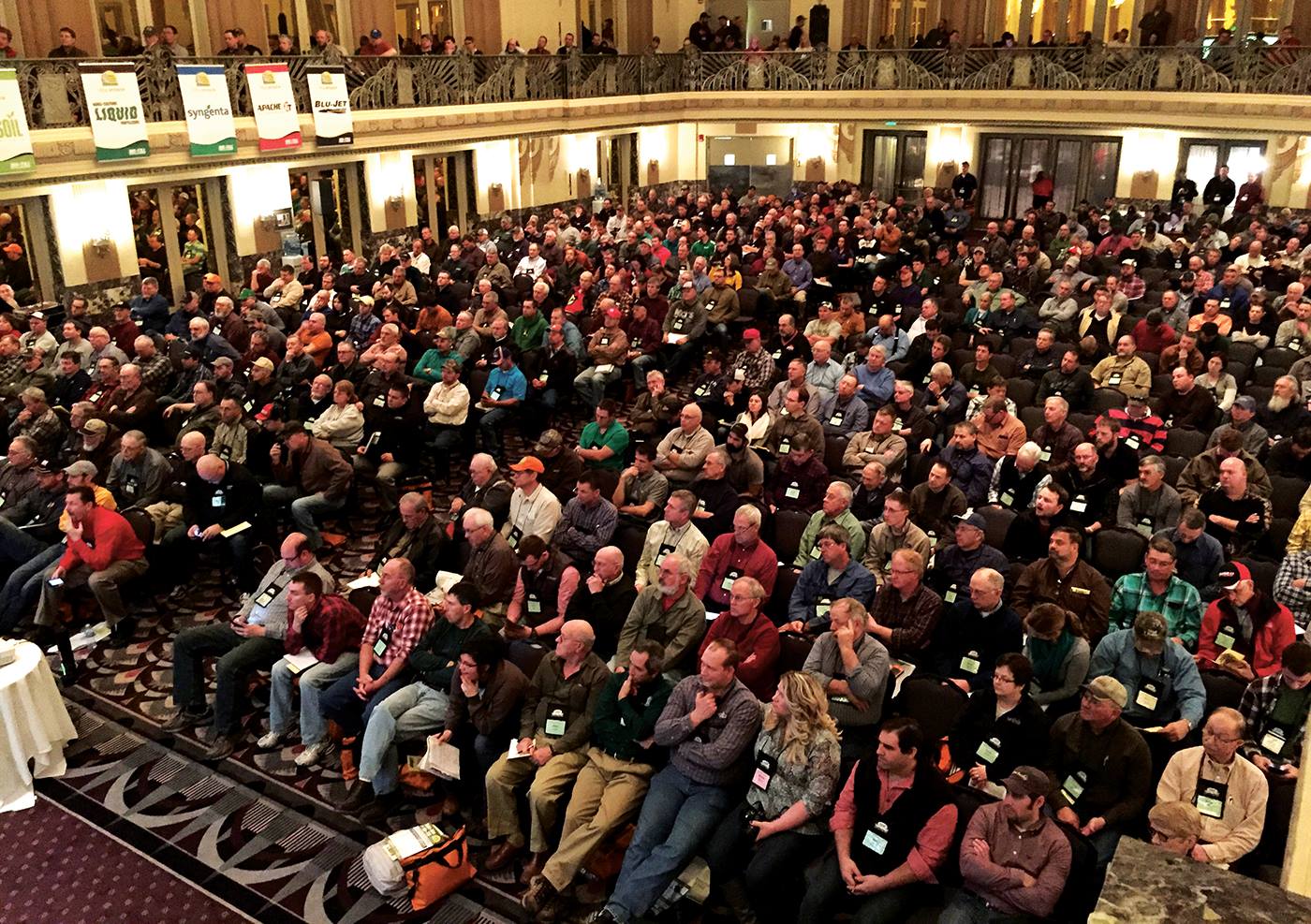I don’t get to hang around farmers as much as I would like, but I know one thing for sure: they have opinions and usually don’t hesitate to share them. I know this because I still remember a lot of the conversations my dad had with my uncles or the neighbors, or my uncles had with our neighbors or our neighbors had with anyone who happened to drive by.
And it isn’t like talking about religion, as described by retired humorist Dave Barry: “People who want to share their religious views with you almost never want you to share yours with them.”
Farmers like hearing from farmers and others who might have something interesting to say. That’s not to say they’ll agree with just anyone, but I have noticed that they will listen even if they have every intention of disagreeing.
A couple of weeks ago, when our sister publication No-Till Farmer held its National No-Tillage Conference in Cincinnati, I walked into a general session at 9:15 p.m. (that’s at night) that was jammed with several hundred farmers sitting in rapt attention listening to a speaker. Everybody knows they should have been in the bar by then.
 Attendees of the 2015 National No-Tillage Conference in Cincinnati stay attentive nearing the end of the first day of sessions on Wednesday, January 14, 2015. Attendees of the 2015 National No-Tillage Conference in Cincinnati stay attentive nearing the end of the first day of sessions on Wednesday, January 14, 2015.
|
A few minutes later as I walked through the hotel lobby, a Kentucky farmer grabbed me. I just looked at him and he started talking about how much he disagreed with a professor he heard who had given a presentation on how the no-till practice really doesn’t sequester carbon in the soil.
To prove his point he regaled me with a 15 minute lecture on hydrocarbons, oil and cow manure. I won’t get into that here as it involves what happens after humans and cows digest their food.
In any case, what got my attention was a Facebook discussion two farmers attending the conference had about the size of farm machinery following a presentation by another college professor. It reminded me of the special report in the September 2014 issue of Farm Equipment on the need for speed in agriculture. (See “Does Agriculture Have a Need for Speed?” p. 27-50.)
A major supposition in the talk, as it was in the September report, is that farm machinery probably won’t get much bigger for a whole host of reasons. Instead, several much smaller machines that operate autonomously will begin replacing the behemoths that are prominent in row-crop farming today.
One farmer wrote on Facebook, “I agree and have been saying this for several years. Axle loads of modern equipment are destroying soil structure. I believe we have reached the pinnacle of farm equipment size. The future will focus on multiple small implements.”
A second farmer totally disagreed and wrote: “Never would happen. More machines = more things to go wrong, especially with all the electronics. Besides, with combines having 400 or more bushel grain tanks who would want 100 bushel grain carts? Also, trying to hit the little grain cart while unloading on the go would be terrible and it would fill in about 15 seconds.”
Looking back at that September report, it’s apparent we should have talked to more farmers. While the ones we did speak with mentioned wanting bigger and faster equipment, none mentioned the maintenance downside of running several smaller units with highly sophisticated controls and mechanisms.
This all reminds me of something we all need to remember: it all gets back to the customer? Even our best ideas aren’t worth anything if no one wants them.






